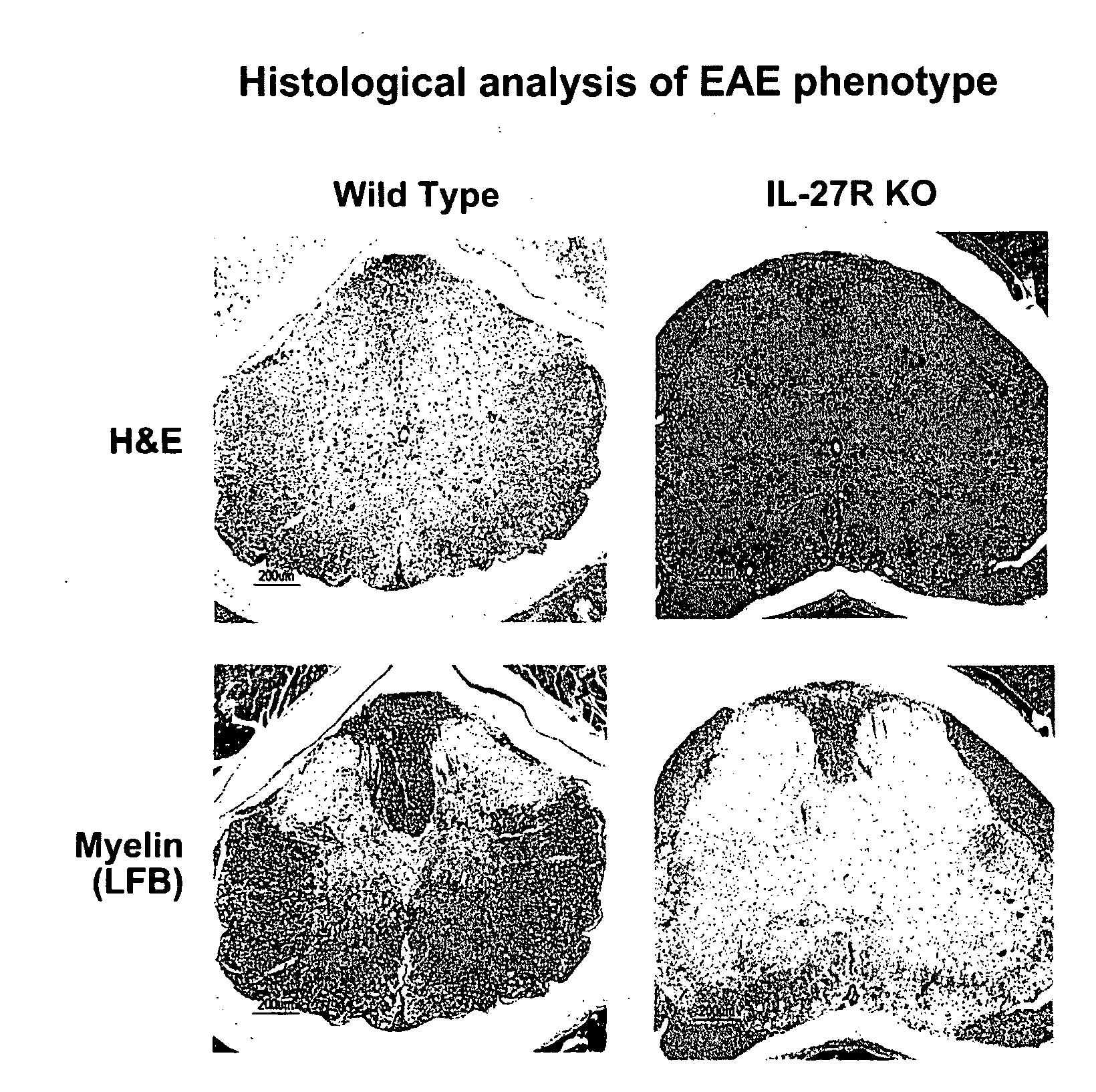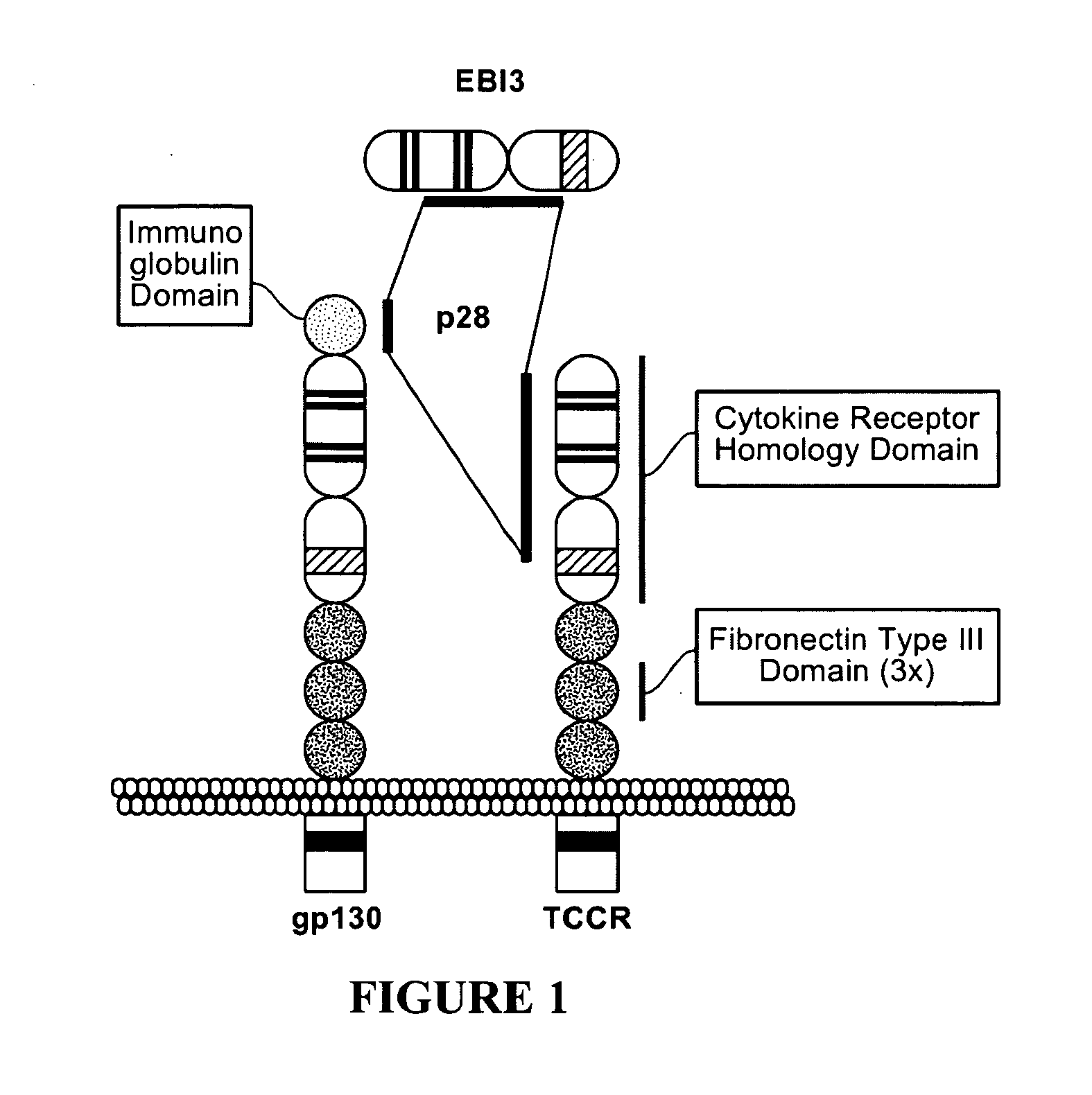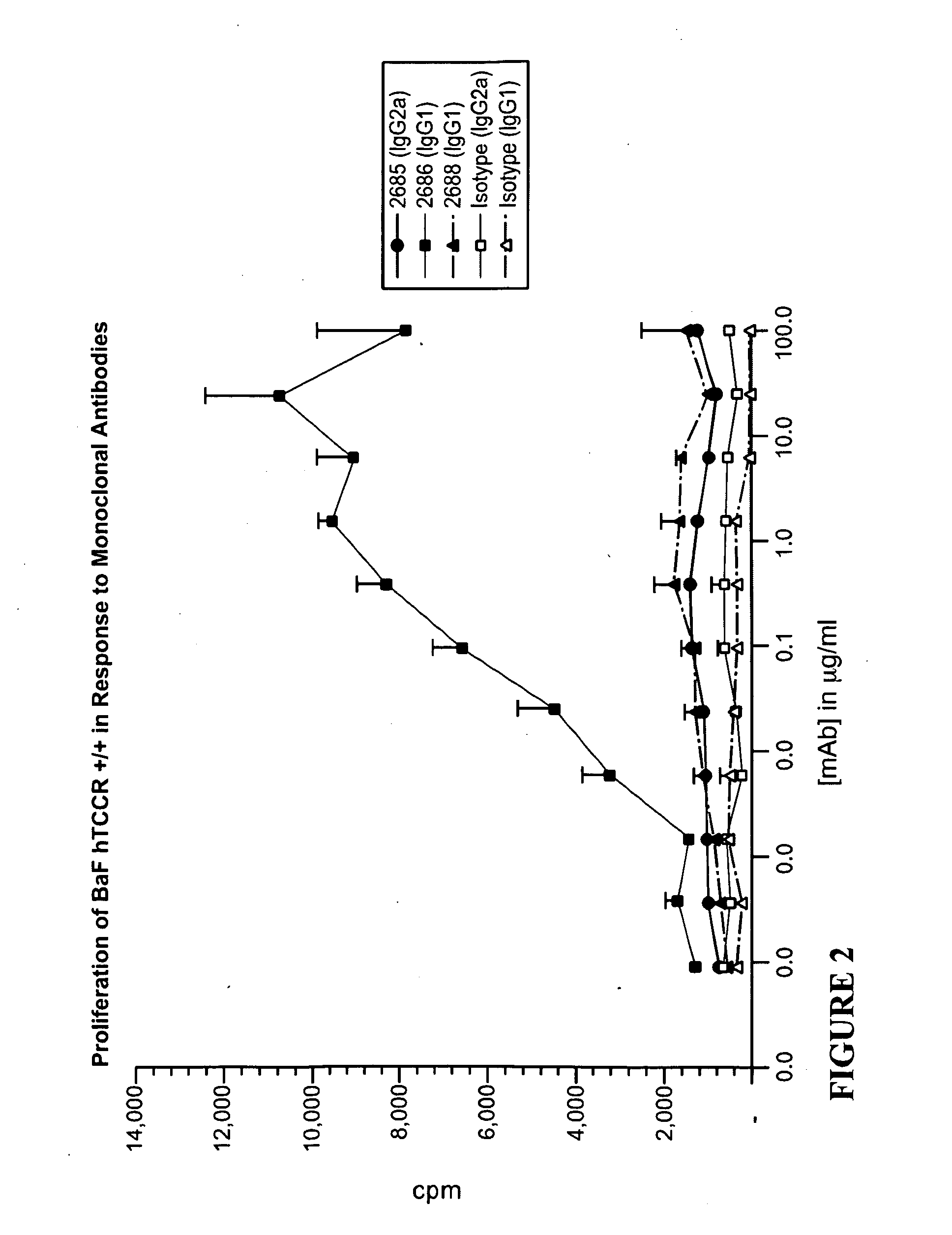Methods for treating autoimmune disorders
a technology for autoimmune disorders and autoimmune disorders, applied in the field of autoimmune disorders, can solve the problems that none of the existing therapies for autoimmune disorders have proved satisfactory, and achieve the effects of reducing t-lymphocyte proliferation, increasing expression of il-10, and reducing t-lymphocyte proliferation
- Summary
- Abstract
- Description
- Claims
- Application Information
AI Technical Summary
Benefits of technology
Problems solved by technology
Method used
Image
Examples
example 1
TCCR-Mediated Suppression of T-Cell Response
[0184]The effect of TCCR activity on T-cell response was tested by analysis of induced T-cell proliferation of wild-type (TCCR + / +) and knock-out (TCCR − / −) splenocytes. The T-cell receptor associates with CD3 to form a T-cell receptor complex. Anti-CD3 antibodies at a sufficient dose non-specifically stimulate proliferation of T-cells normally associated with the interaction of T-cell receptor complex and MHC class II molecules (CD4) of an antigen-presenting cell (APC).
[0185]Proliferation of wild-type (TCCR + / +) and knock-out (TCCR − / −) mixed lymphocytes, isolated CD4+ T cells, and isolated CD8+ T cells were stimulated by anti-CD3 antibody (BD Pharmingen, San Diego, Calif., clone 145-2c11). Cells were grown for three days in a humidified CO2 incubator and proliferation was measured by [3H]-thymidine incorporation as measured during the last 8-16 hours of the assay. Surprisingly, anti-CD3 antibody induced proliferation of mixed lymphocytes...
example 2
Mice Expressing TCCR are Less Susceptible to EAE
[0190]Experimental allergic encephalomyelitis (EAE) is an autoimmune disorder of the CNS that serves as an animal model for multiple sclerosis (MS). Similar to MS, EAE is a demyelinating disorder where immune-mediated damage to myelin results in observable symptoms. EAE is believed to be mediated by both CD4+ Th1 cells (Fife et al., 2001, J. of Immun., 166:7617-7624) and CD8+ cytotoxic T-lymphocytes (CTLs) (Huseby et al., 2001, J. Exp. Med., 194(5):669-676). To examine the effect of TCCR on EAE, clinical progression of EAE was examined in wild-type mice expressing TCCR (TCCR + / +) and knock-out mice lacking TCCR (TCCR − / −). As shown below, mice expressing TCCR were less susceptible to the CD4+ Th1 and CD8+ mediated disorder EAE than were mice lacking TCCR.
[0191]Knock-out TCCR − / − mice were generated as described in WO0129070 (de Sauvage et al.) and back-crossed onto the C57BL / 6 background and bred from N12 founders. Wild-type TCCR + / + c...
example 3
Treatment of an Autoimmune Disorder with a TCCR Agonist
[0202]As described for Example 2, experimental allergic encephalomyelitis (EAE) is a CD4+ Th1 or CD8+ mediated autoimmune disorder of the CNS that serves as an animal model for multiple sclerosis (MS). To examine the effect of an administered TCCR agonist on the progression and course of an autoimmune disorder, a TCCR agonist such as IL-27 is administered in an experimental model system of MS, such as induced EAE. EAE is initiated in mice, for example, as described above for Example 2. Clinical progression of EAE is evaluated in mice expressing TCCR (TCCR + / +) and receiving a TCCR agonist, such as IL-27. Mice treated with a TCCR agonist such as IL-27 are expected to show reduced clinical symptoms or progression of disease, and / or to be less susceptible to autoimmune disorders than untreated TCCR + / + controls.
PUM
| Property | Measurement | Unit |
|---|---|---|
| concentration | aaaaa | aaaaa |
| concentration | aaaaa | aaaaa |
| concentration | aaaaa | aaaaa |
Abstract
Description
Claims
Application Information
 Login to View More
Login to View More - R&D
- Intellectual Property
- Life Sciences
- Materials
- Tech Scout
- Unparalleled Data Quality
- Higher Quality Content
- 60% Fewer Hallucinations
Browse by: Latest US Patents, China's latest patents, Technical Efficacy Thesaurus, Application Domain, Technology Topic, Popular Technical Reports.
© 2025 PatSnap. All rights reserved.Legal|Privacy policy|Modern Slavery Act Transparency Statement|Sitemap|About US| Contact US: help@patsnap.com



